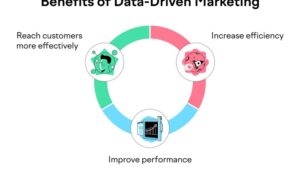Using Social Media for Customer Feedback opens up a world of possibilities for businesses seeking valuable insights and stronger customer connections. Dive into this dynamic strategy with us as we explore its impact and benefits in the modern digital landscape.
From real-time feedback to actionable insights, this powerful tool revolutionizes how businesses interact with their customers, paving the way for more informed decision-making and enhanced customer satisfaction.
Importance of Using Social Media for Customer Feedback
In today’s digital age, social media has become a powerful tool for businesses to gather valuable feedback from their customers in real-time. It allows companies to connect directly with their target audience, understand their needs and preferences, and improve their products or services accordingly.
Social Media as a Valuable Feedback Platform
Social media platforms such as Twitter, Facebook, and Instagram provide businesses with a direct line of communication with their customers. By monitoring comments, messages, and reviews, companies can gain insights into customer satisfaction levels, identify areas for improvement, and address any issues promptly.
- Companies like Starbucks use social media to collect feedback on new products, promotions, and customer experiences. By engaging with customers on platforms like Twitter and Instagram, Starbucks can quickly address any concerns or complaints, enhancing customer loyalty and satisfaction.
- Similarly, Amazon leverages social media to gather feedback on their vast array of products and services. By responding to customer reviews and comments on platforms like Facebook and LinkedIn, Amazon can continuously improve the quality of their offerings and tailor them to customer needs.
Benefits of Real-time Feedback through Social Media
Real-time feedback through social media channels allows businesses to address customer concerns immediately, enhancing customer satisfaction and loyalty. By responding promptly to feedback, companies can show customers that their opinions are valued, leading to increased brand trust and loyalty.
Social media provides businesses with a direct and immediate way to collect feedback, enabling them to make timely improvements and enhance customer satisfaction.
Strategies for Collecting Customer Feedback on Social Media

In today’s digital age, collecting customer feedback on social media platforms is crucial for businesses to understand their customers’ needs and preferences. By actively seeking feedback and engaging with customers online, companies can improve their products and services, ultimately leading to increased customer satisfaction and loyalty.
Different Methods for Actively Soliciting Feedback on Social Media
- Conducting polls and surveys on platforms like Instagram and Twitter to gather quick feedback from followers.
- Encouraging customers to leave reviews and ratings on Facebook and Google My Business pages.
- Hosting live Q&A sessions or feedback sessions on platforms like Facebook Live or Instagram Live to interact with customers in real-time.
Share Tips on How to Encourage Customers to Provide Feedback through Social Media
- Offer incentives such as discounts or giveaways for customers who leave feedback on social media platforms.
- Respond promptly to all feedback, whether positive or negative, to show customers that their opinions are valued.
- Create engaging and interactive posts that encourage customers to share their thoughts and experiences with your brand.
Discuss the Importance of Monitoring Multiple Social Media Channels for Feedback
- Customers may provide feedback on various platforms, so it’s essential to monitor channels like Facebook, Twitter, Instagram, and LinkedIn to capture all feedback.
- By monitoring multiple social media channels, businesses can gain a comprehensive understanding of customer sentiments and trends across different platforms.
- Responding to feedback on various channels shows customers that you are attentive and committed to addressing their needs, ultimately building trust and loyalty.
Analyzing and Utilizing Customer Feedback from Social Media: Using Social Media For Customer Feedback
Effective analysis of customer feedback gathered from social media is crucial for businesses to improve their products or services. By understanding the insights provided by customers, businesses can make informed decisions to enhance customer satisfaction and loyalty.
Deriving Actionable Insights from Social Media Feedback, Using Social Media for Customer Feedback
- Monitor trends: Businesses can identify recurring themes or issues raised by customers on social media platforms. This can help prioritize areas for improvement.
- Identify sentiment: Analyzing the tone of customer feedback (positive, negative, neutral) can provide valuable insights into customer satisfaction levels.
- Track engagement: Measuring the level of engagement (likes, shares, comments) on feedback posts can indicate the impact of customer opinions on the audience.
Implementing Changes based on Social Media Feedback
- Respond proactively: Addressing customer feedback promptly and professionally can show customers that their opinions are valued.
- Adapt offerings: Use feedback to tailor products or services to better meet customer needs and preferences.
- Create action plans: Develop strategies based on feedback insights to improve customer experience and overall satisfaction.
Best Practices for Engaging with Customers on Social Media

In today’s digital age, engaging with customers on social media is crucial for building strong relationships and fostering brand loyalty. Here are some best practices for effectively engaging with customers on social media:
Responding to Feedback
- Respond to both positive and negative feedback promptly: Acknowledge and thank customers for positive feedback, and address any concerns or issues raised in negative feedback in a timely manner.
- Show empathy and understanding: When responding to negative feedback, demonstrate empathy and a willingness to resolve the issue to the customer’s satisfaction.
- Personalize responses: Address customers by name and tailor your responses to their specific feedback to show that you value their input.
Importance of Timely and Authentic Engagement
- Timely responses show that you care: Responding promptly to customer feedback shows that you prioritize customer satisfaction and are committed to addressing their needs.
- Authentic engagement builds trust: Engaging authentically with customers on social media helps build trust and credibility, leading to stronger customer relationships and brand loyalty.
- Be genuine and transparent: Authentic engagement involves being genuine, transparent, and honest in your interactions with customers, cultivating a positive brand image.
Examples of Effective Customer Engagement
- Starbucks: Starbucks engages with customers on social media by responding to feedback, sharing user-generated content, and running interactive campaigns to involve their audience.
- Nike: Nike uses social media to engage with customers through personalized responses, behind-the-scenes content, and interactive challenges to create a sense of community among their followers.
- Dove: Dove effectively engages with customers by promoting body positivity, sharing empowering stories, and responding to customer feedback to create a supportive and inclusive online community.





